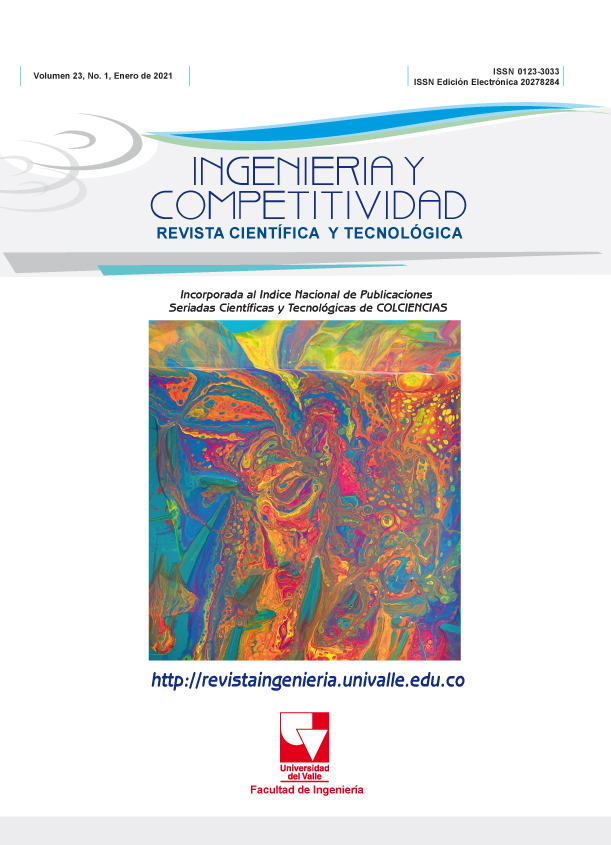Factores que determinan la sostenibilidad del servicio de saneamiento básico en Manizales
Palabras clave:
Ciudades sostenibles, Desarrollo sostenible, Participación ciudadana, Saneamiento básico, Servicio públicoContenido principal del artículo
El tratamiento de las aguas servidas representa uno de los grandes desafíos en la gestión del agua. Al respecto, el 80% de las aguas residuales son vertidas a las fuentes hídricas sin ningún tipo de tratamiento, desconociendo de esta forma el derecho fundamental del acceso al agua y al saneamiento y sus implicaciones el bienestar y desarrollo de las poblaciones. Colombia desde la década de los 50´s inicia la estrategia de mejoramiento del agua y el saneamiento. Siete décadas de diseño e implementación de políticas a favor de la ampliación de las coberturas en servicio de acueducto, alcantarillado y saneamiento, con avances significativos para los servicios de acueducto y alcantarillado y con grandes retos frente a la necesidad de focalizar y optimizar los esfuerzos para ser más eficientes y hacer más sostenible el saneamiento. El estudio y entendimiento del saneamiento básico sostenible se realizó a través de la búsqueda de información secundaria realizada en informes sectoriales y documentos de investigación, donde se identificaban factores que incidían de forma positiva o negativa en la prestación del servicio de saneamiento. Por otra parte la comprensión de las dinámicas sociales y políticas del territorio permite en el contexto de la ciudad de Manizales identificar y analizar las percepciones desde los tres pilares de la sostenibilidad, medio natural, medio social y medio económico de dos grupos de interés de la empresa Aguas de Manizales S.A E.S.P, prestadora del servicio de acueducto y alcantarillado en la ciudad, a través de la aplicación de encuesta a los usuarios y de la realización de unos grupos focales con instituciones y líderes comunitarios.
Los resultados de la investigación aportaron elementos importantes para la toma de decisiones informadas a la empresa Aguas de Manizales S.A E.S.P que pueden ser consideradas por otras ciudades de similares características que deseen implementar de manera sostenible el servicio de saneamiento básico.
(1) CINARA, Servicios Publicos Domiciliarios, FINDETER. Servicios sostenibles de agua y saneamiento : marco conceptual. 1998;157 p. : 10 fig., 20. Available from: http://www.ircwash.org/sites/default/files/827-CO-15345.pdf.
(2) WWAP (United Nations World Water Assesment Programme). The United Nations World Water Development Report 2017: Wastewater the untapped resource. UNESCO. Paris; 2017.
(3) Mejía A, Requena B, Rivera D, Pardón M, Rais J. Agua potable y saneamiento en América Latina y el Caribe: Metas realistas y soluciones sostenibles. 1st ed. Corporación Andina de Fomento (CAF), editor. Panamá; 2012. 56 p.
(4) Andersson K, Dickin S, Rosemarin A. Towards “Sustainable” Sanitation: Challenges and Opportunities in Urban Areas. Sustainability. 2016;8(12):1289. https://doi.org/10.3390/su8121289.
(5) Superservicios. Informe Técnico sobre Sistemas de Tratamiento de Aguas Residuales en Colombia. Bogotá, D.C.; 2014.
(6) Ashkenazi E. Ancient Well Reveals Secrets of First Jezreel Valley Farmers. Haaretz [Internet]. 2012 Nov 8. Available in: https://www.haaretz.com/one-of-world-s-oldest-wells-found-in-israel-1.5197284.
(7) Mughal M. Mohenjo-daro’s Sewers. World History Encyclopedia - Vol. 3. McGeough KM, editor. Santa Barbara, CA; 2011. 121–122 p.
(8) Khan S. Sanitation and wastewater technologies in Harappa/Indus valley civilization (ca. 2600-1900 BC). In: Angelakis A, Rose J, editors. Evolution of Sanitation and Wastewater Technologies through the Centuries. 1st ed. London: IWA Publishing; 2014. p. 25–42.
(9) Messer, A. Maya plumbing, first pressurized water feature found in New World. Penn State [Internet]. 2010 May 5. [cited 2014 March 26]. Available in: https://news.psu.edu/story/141704/2011/02/08/research/maya-plumbing-first-pressurized-water-feature-found-new-world.
(10) Teresi D. Lost Discoveries: The Ancient Roots of Modern Science--from the Babylonians to the Maya. 1st ed. Simon & Schuster Paperbacks, editor. New York; 2003. 464 p.
(11) Chavalas MW, editor. Great Events from History: The Ancient World Prehistory - 476 C E. Pasadena: Salem Press; 2004. 545 p.
(12) Schladweiler J, McDonald J. Schladweiler JC, McDonald J. 1300’s – Late 1500’s Sir John Harington’s New Ajax (The True Roots of the Modern Day Flush Toilet) with Impetus Provided to John Harington by Queen Elizabeth, “The Schoole of Salerne”, and “The Englishmans Doctor.” London; 2004.
(13) Glamorgan County Council. Report of the Principal Officer of Health. Glamorganshire, Wales; 1889.
(14) Burian SJ, Nix SJ, Pitt RE, Durrans SR. Urban Wastewater Management in the United States: Past, Present, and Future. J Urban Technol. 2000;7(3):33–62. https://doi.org/10.1080/713684134.
(15) Cerda J, Valdivia G. John Snow, the cholera epidemic and the foundation of modern epidemiology. Rev chil infectol. 2007;24(4):331–4. http://dx.doi.org/10.4067/S0716-10182007000400014.
(16) Aguas De Manizales SA ESP. Grupos de interés [Internet]. Manizales: Aguas De Manizales SA ESP, editors; [Revised 2020 sep 25]. Available from: https://www.aguasdemanizales.com.co/NuestraEmpresa/InformacionGeneral/EntidadesAgremiaciones#seccion748.
Downloads

Esta obra está bajo una licencia internacional Creative Commons Atribución-NoComercial-CompartirIgual 4.0.
Los autores que publican en esta revista están de acuerdo con los siguientes términos:
Los autores ceden los derechos patrimoniales a la revista y a la Universidad del Valle sobre los manuscritos aceptados, pero podrán hacer los reusos que consideren pertinentes por motivos profesionales, educativos, académicos o científicos, de acuerdo con los términos de la licencia que otorga la revista a todos sus artículos.
Los artículos serán publicados bajo la licencia Creative Commons 4.0 BY-NC-SA (de atribución, no comercial, sin obras derivadas).

